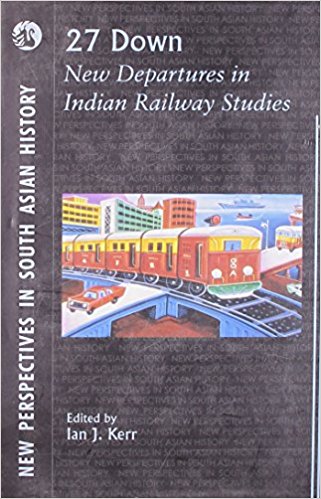This is a part of the series, ‘New perspectives in South Asian History’, a path-breaking work on the history of Indian Railways during the colonial period, with a comprehensive ‘Introduction’ by the editor. The book has eight essays by nine different authors, all academicians and researchers in English, History, Economics, and Anthropology, and located in UK, USA, Canada, Australia and Netherlands. The book also has a CD containing statistics on Indian railways including those for the period 1884–1939, a consolidated biography for the essays, and other interesting material. The ‘Introduction’ rightly says that the book attempts to ‘open up new lines of research and facilitate research by others’. The first three essays are related to the representational presence of Indian railways in Indian literature and films. The fifth and sixth essays are on specific subjects, respectively, of licensed porters as exemplified by those at Dadar station, and growth of railway workshops and labour in north India during colonial rule.
The fourth, seventh and eighth essays situate the development of the railway system in the mishmash of economic, capitalist, and industrial developments in the world in general and in the British-Indian colonial set-up in particular, during the periods 1850–1873, 1859–1914, and 1884–1939 respectively. Brief comments on these essays follow in the same order.
The ‘Introduction’, a complete essay in itself, starts with a brief ‘biographical essay’ of railways in India, their birth (1853) and growth till 1947, and goes on to list important sources of multi-dimensional, multi-disciplinary, information related to the genesis,

